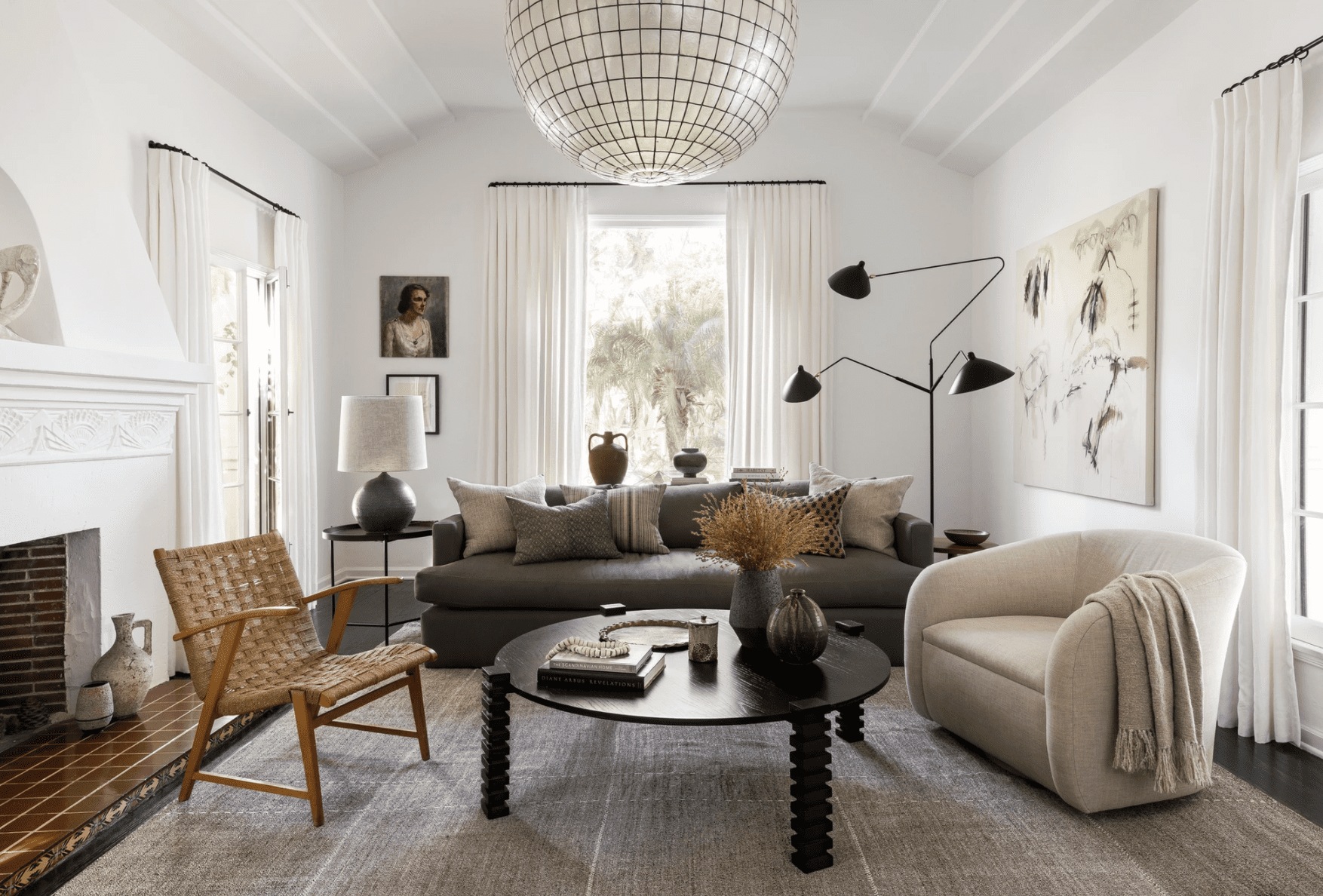Whether you’re decorating your first apartment or redesigning your forever home, good design isn’t just about personal taste—it’s also about balance, function, and intention. That’s where the 7 principles of interior design come in.
These timeless concepts form the foundation for creating well-thought-out, aesthetically pleasing spaces. Understanding them can help you make better design choices and turn any room into a place that feels just right.
1. Balance
Balance is all about distributing visual weight evenly throughout a space to create a sense of stability. There are three types:
-
Symmetrical balance: Common in traditional interiors, where elements are mirrored on either side of a central line.
-
Asymmetrical balance: More dynamic and modern, using different objects of similar visual weight (like a large plant balanced by a grouping of small framed photos).
-
Radial balance: Elements arranged around a central point, like chairs around a round table.
Tip: Step back and see if your room feels too heavy on one side—redistribute elements to achieve harmony.
2. Rhythm
Rhythm in interior design creates movement by repeating patterns, colors, shapes, or lines throughout a space. It guides the eye around the room, adding a sense of flow.
Examples:
-
Repeating a color from a pillow in a piece of wall art
-
Using similar shapes in furniture and decor
-
Incorporating stripes or geometric patterns
DIY tip: Choose one element (color, texture, or material) and repeat it subtly in at least three areas.
3. Emphasis
Every well-designed room needs a focal point—a place where the eye naturally lands first. It could be a fireplace, a bold piece of art, a dramatic light fixture, or even a brightly colored accent wall.
Once you’ve identified your focal point, arrange the rest of the room to support and enhance it.
Avoid this mistake: Competing focal points. Keep it simple—let one main feature shine.
4. Contrast
Contrast brings visual interest and energy to a room by combining opposing elements. Think light vs. dark, rough vs. smooth, or modern vs. rustic.
Examples:
-
Black picture frames on a white wall
-
A velvet couch with a wooden coffee table
-
Pairing curved decor items with straight-lined furniture
Use contrast to keep your space from feeling flat or one-note.
5. Scale and Proportion
Scale refers to the size of objects in relation to the room, while proportion is the relationship between parts of a whole.
Key tips:
-
A small rug in a large room looks out of place. Go bigger!
-
Oversized art above a tiny sofa will overwhelm the space.
-
Choose furniture that fits the room—not just in size, but in visual weight.
Use painter’s tape to map out dimensions before buying or arranging new pieces.
6. Unity and Harmony
A cohesive room feels intentional, not chaotic. Unity means all elements work together—colors, styles, and textures align to create a pleasing whole.
You don’t have to make everything match, but there should be a unifying thread throughout the space, such as a color scheme or design style.
Pro tip: Stick to a consistent palette and repeat key materials (like wood, brass, or linen) throughout your home.
7. Function
Above all, good design must be practical. A beautiful space means nothing if it doesn’t work for the way you live.
-
Does the furniture layout support conversation and movement?
-
Is there enough storage?
-
Can you reach everyday items easily?
Design should improve your day-to-day life—not get in the way of it.
Final Thoughts
Understanding these seven principles of interior design—balance, rhythm, emphasis, contrast, scale and proportion, unity and harmony, and function—can help you create rooms that are not just beautiful, but also comfortable and practical.
You don’t have to follow them rigidly, but keeping them in mind can turn guesswork into great design.
Because at the end of the day, the best spaces don’t just look good—they feel good too.



